The Pan Am Series – Part VII: Aviation History
27 September 2013 Leave a comment
Pan American World Airways’ Role in Aviation History
During the next three months, anniversaries of many “firsts” and significant events in the history of Pan American World Airways will be observed. There are quite a few particularly noteworthy events. Suffice to say, below is a list:
October: Launch of the Pan Am Shuttle on 1 October 1986; first to order American-built jet transports from Boeing on 13 October 1955; ditching of flight 943, a Boeing 377, in the Pacific on 15 October 1956; first airliner trip to McMurdo Sound, Antarctica on 15 October 1957; first flight on 19 October 1927 (chartered from West Indian Aerial Express); first trans-Pacific passenger service on 21 October 1936; first flight to Hong Kong on 23 October 1936; first Amazon route service on 25 October 1933, first trans-Atlantic service with the Boeing 707 on 26 October 1958; first scheduled Pan Am flight on 28 October 1927 and first to make a round-the-world flight via the North and South Poles on the same date in 1977, marking the 50th anniversary of the airline.
November: First delivery of the Douglas DC-4 on 3 November 1945; first service to Fiji on 5 November 1941; first service to Barcelona on 8 November 1948; first Great Circle route to Tokyo on 17 November 1959; first “Clipper” flight on 19 November 1931 and the first trans-Pacific flight (mail) by the China Clipper a Martin M-130 on 22 November 1935.
December: First service to Bolama (West Africa) on 1 December 1940; runway overrun by flight 812, a Boeing 707, after an aborted takeoff caused by bird strikes and a related engine failure in Sydney on 1 December 1969; first to open the largest single air terminal in the world at New York Kennedy Airport on 5 December 1973; first service to Leopoldville on 6 December 1941; first delivery of the wide-body Boeing 747 on 12 December 1969; first jet service to Sydney on 15 December 1959; first delivery of the Ford Tri-Motor on 28 December 1928 and first delivery of the Fokker F-10-A on 31 December 1928.
On a sadder note, during this same period will be the anniversaries of Lockerbie on 21 December 1988, the last trans-Atlantic flight from Frankfurt on 1 November 1991 and finally, the cessation of all operations on 4 December 1991.
It has been suggested that the history of Pan Am could be considered the history of international commercial air transportation. The above events, plus the geographic location of the US and the events of World War II, lend a lot of validity to this assertion. At the time of Pan Am’s founding, the notion of using air carriers for shipping the mail was gaining in viability, and getting mail to the countries of Latin America by air became an attractive idea. A special inter-departmental committee called by then Secretary of Commerce Herbert Hoover reported its recommendations just about one month after Pan Am successfully delivered its first load of mail to Cuba. This committee was headed by Undersecretary of State Francis White, a Yale alumnus known to Pan Am’s founder Juan Trippe, and a supporter of the new airline. The committee included representatives from the Commerce, War, and Navy Departments, as well as the Post Office – several being Yale grads and known to Trippe. Their conclusions, among other things, included the suggestion that foreign airmail contracts be let to the bidder that in the judgment of the Postmaster General, would best serve the interests of the United States, which was a critical distinction, freeing the Post Office from selections based solely on low bids. They also suggested development of two routes south from Florida, both of which had been suggested by Trippe. It was this meeting that for all practical purposes crowned Pan American Airways as America’s chosen instrument for developing international air routes.
Operating authority to these countries, however, needed to be secured and at the time there was no framework within the US government to accomplish that. Trippe, was able to do it. He carried out then, what the US Departments of State and Transportation do today with respect to foreign routes. But to realize his vision, Trippe needed the U.S. government’s cooperation and as a result, Pan Am worked closely with a small group of influential and informed government officials to create and exploit the opportunity that would permit Pan Am to flourish and grow.
Another factor was that the US had virtually no colonial empire as compared to its European counterparts. The “foreign routes” of European airlines, for the most part government-owned (unlike the privately owned US carriers), were largely made up of routes to their colonies in Africa and Asia. There was no need to obtain operating rights. Pan Am, however, was required to obtain rights to operate not only to the European countries, but to their colonies as well. This was basically the situation at the beginning of World War II.
During World War II, because of the nature of the war in the Pacific, the US faced a need to develop large, long-range aircraft, in transports (the C-54) and bombers. These aircraft featured large fuselages, a wide wingspan and big capacity. Translated to a peace environment, these would convert to large passenger aircraft that would give the US a decided advantage in long-haul, intercontinental commercial airline operations. Because of this and other factors, the Chicago Conference was called in 1944 to deal with such issues that many anticipated would arise at the end of the war. What emerged from that conference was the International Civil Aviation Organization, the Freedoms of the Air and the framework for traffic rights between countries through Bilateral Agreements.
At the end of the war, with the benefit of conversion of wartime aircraft to large passenger aircraft, Pan Am emerged as a truly global airline, culminating in the operation of the first commercial round-the world-flight in 1947. The war also caused the development of a mighty U.S. based aircraft industry, capable and ready to beat the proverbial sword into plows to supply newly-developed aircraft to both U.S. and foreign airlines.
John T. McCoy’s watercolor of Pan Am’s first round-the-world flight (left) and the “converted bomber” (right) .
The people of Pan Am have been in the forefront of the airline’s glorious history. And probably no other airline chief ever received the loyalty that Juan Trippe earned, carrying on through decades long after he stepped down as Pan Am’s Chairman, his passing and finally the passing of the airline he founded. Many of the Pan Am family played major roles in Pan Am’s history and have had the selflessness to share their recollections with us.
In Pan American World Airways – Aviation History Through the Words of Its People, published by BlueWaterPress, seventy-one such Pan Amers did just that, giving us 71 stories about their part in some of Pan Am’s history-making events.
Here are some of the writers:
Left to right: Kathleen Clair, writes about her experiences as Juan Trippe’s personal assistant; Jay Koren (2nd from right in picture) writes about the first 707 flight; Kari Mette Pigman remembers November 22, 1963 in Dallas; and Gillian Kellogg L’Eplattenier tells about the excitement of flying the Beatles to New York.
Left to right: Bob Gandt tells of his experiences flying with the “Skygods”; Helen Davey recalls the R&R flights during Viet Nam; John Bigelow brings back memories helping Ariana Afghan Airlines; and John McGhee recounts the evacuation of Vietnamese orphans.
Left to Right: Allan Topping recollects his role in Pan Am’s last flight out of Saigon; Dorothy Kelly recalls the horrors of Tenerife; Ron Marasco tells us about Pan Am’s special relationship with Mother Teresa; and George Doubleday brings back memories of resuming service to China.
Left to right: Harvey Benefield recalls evacuating Pan Am employees from Tehran; Mike Clark remembers his role in the merger with National Airlines; Merle Richman tells about Pan Am’s last round-the-world flight; and Diane Vander-Zanden recollects the sale of Pan Am’s venerable Pacific routes.
Left to right: Kelly Cusack writes about starting the Pan Am Shuttle; Arnie Reiner recalls the initial investigation of the Lockerbie tragedy; Don Cooper tells about the Internal German Service out of Berlin; Nancy Scully recollects her experiences working Pan Am’s White House Press Charters; and Mark Pyle remembers piloting the Last Clipper to Miami.
From the preface:
“On December 11, 1934, Pan Am’s founder, Juan T. Trippe in a New York City speech stated:
‘By each successive step, aviation is advancing to that potential ideal of a universal service for humanity. By overcoming artificial barriers, aviation can weave together, in closer understanding, the nations of the world, and lift for the peoples of the world those horizons which have too long limited the prospective of those who live upon this earth.’
“These words are fulfilled in this book, an anthology of stories written by the people of Pan Am. They were there at the important and news-making events that shaped the airline’s life. Many of these events made headlines around the world, such as the carnage at Tenerife or the Lockerbie bombing. And, with the recent fall of Muammar Ghaddafi, the name Pan American is still commanding space in news publications today. Other events, among so many, might have just been a small item in the local newspaper or were never reported at all.
“There were those employees who went beyond the call of duty; others were simply doing their job and in some cases there was loss of life of their dear friends. The bottom line, big or small, heroic or otherwise, is that the events were important to the airline and its people. This is the story we have to tell: The historic achievements of Pan Am as experienced and lived by its greatest resource – its people.”
Below are some comments:
From Michael Manning, Broadcast Journalist and Media Consultant,
“[The book takes the] reader ‘inside Pan Am’ relative to its achievements and tragedies from a first-person perspective. * * * [O]ver 70 first-hand accounts . . . that lend authenticity to the human experience shared by employees at all levels of the company. By the conclusion of the book, what becomes evident is that this unique US institution—long admired as ‘the American Flag’ by many foreign countries—has also come to represent a piece of the USA that has been sadly lost. This wonderful presentation of Pan Am revealed without barriers allows the reader to ponder a company that was only as great as the people who made it ‘The World’s Most Experienced Airline’”.
From Bobby Booth, long time airline consultant and aficionado,
“The stories in this book make up what is essentially one important story – a story of dedication, heroism, and sacrifice – by an airline and its people during an important period of aviation history. It is a story that needs to be preserved in history for future generations. This book is an important step in that direction.”
From Edward S. Trippe, Chairman, Pan Am Historical Foundation,
” . . . is a tribute to the legacy of one of the world’s great airlines and the men and women who for six decades were the soul of the company. * * * [This is] a compelling book, which through the words of its contributors captures much of the joy, adventure and spirit which was Pan Am.”
From Readers,
“This is a superb collection of very short tales by a wide range of former employees ranging from flight crew to “ground pounders.” Taken together they provide an accurate, intimate view of what made this airline great.”
“Pan Am – nostalgia – memories – incredible stories. A must read if you enjoy air travel and get to wondering just what kind of lives did – and do – airline personnel live.”
“A nice compiling of stories by former Pan Am employees. Well worth the read for any fan of Pan Am or airlines in general. Pan Am was the pioneer and the stories in the book prove it!”
From Sir Richard Branson, Chairman, Virgin Group,
“Fathered by the legendary Juan Trippe, Pan American was the leader in international aviation exploration and development. A relentless risk-taker, Trippe was an innovator and ultimate entrepreneur……………and this book captures many of Pan Am’s most memorable events from personal accounts of the employees who were there.”
Preview Pan American World Airways – Aviation History Through the Words of its People, which is available on Amazon.
To learn more about the history of this pioneering airline, click on the title below for preview of
Pan American World Airways – Images of a Great Airline Second Edition.
This book is available on eBay .
Another excellent book is Pan Am – Personal Tributes to a Global Aviation Pioneer, which was published to commemorate the 90th Anniversary of Pan Am’s founding. It contains more than 80 stories written by former Pan Am employees and international media friends who had personal experience with many of Pan Am’s key events during its history. It is the perfect companion to Pan American World Airways – Images of a Great Airline Second Edition and can be purchased on Amazon.
For further information about the history of Pan American World Airways, visit: Pan Am Historical Foundation



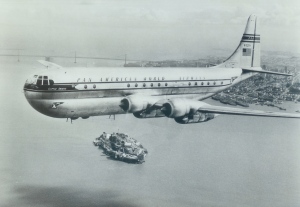
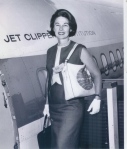


















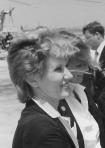






















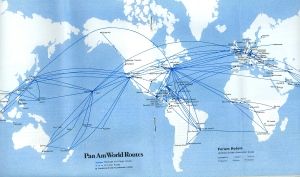


























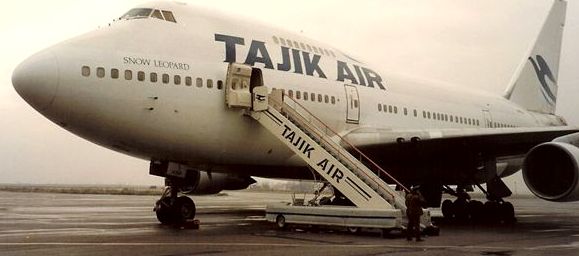





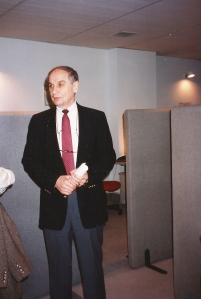












Recent Comments